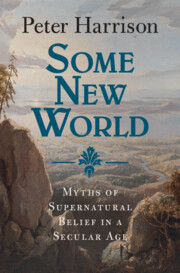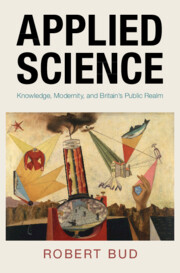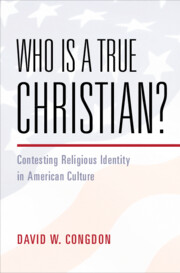323 results
Chapter 30 - America
- from Part V - World Cultures Inspiration and Reception
-
-
- Book:
- Goethe in Context
- Published online:
- 16 May 2024
- Print publication:
- 23 May 2024, pp 291-300
-
- Chapter
- Export citation
Chapter 35 - Goethe and Our Endangered Natural World
- from Part VI - Goethe’s Lasting Significance
-
-
- Book:
- Goethe in Context
- Published online:
- 16 May 2024
- Print publication:
- 23 May 2024, pp 341-349
-
- Chapter
- Export citation
Chapter 32 - Faust and Modernity
- from Part VI - Goethe’s Lasting Significance
-
-
- Book:
- Goethe in Context
- Published online:
- 16 May 2024
- Print publication:
- 23 May 2024, pp 313-322
-
- Chapter
- Export citation
Chapter 13 - Classicism
- from Part II - Literature
-
-
- Book:
- Goethe in Context
- Published online:
- 16 May 2024
- Print publication:
- 23 May 2024, pp 121-129
-
- Chapter
- Export citation
An African History of Development - The Idea of Development in Africa: A History Corrie Decker and Elisabeth McMahon. Cambridge: Cambridge University Press, 2021. Pp. 333. £74.00, hardcover (ISBN: 9781107103696); £23.99, paperback (ISBN: 9781107503229); £23.99, ebook (ISBN: 9781316217344).
-
- Journal:
- The Journal of African History , First View
- Published online by Cambridge University Press:
- 16 May 2024, pp. 1-4
-
- Article
- Export citation
17 - Feminism and Modern Sexuality
-
-
- Book:
- The Cambridge World History of Sexualities
- Published online:
- 26 April 2024
- Print publication:
- 16 May 2024, pp 366-387
-
- Chapter
- Export citation
7 - What the Greeks Saw
-
- Book:
- Some New World
- Published online:
- 29 March 2024
- Print publication:
- 18 April 2024, pp 353-380
-
- Chapter
- Export citation
Chapter 19 - Literature
- from Part IV - Arts
-
-
- Book:
- Vaughan Williams in Context
- Published online:
- 28 March 2024
- Print publication:
- 04 April 2024, pp 161-168
-
- Chapter
- Export citation
Imagined Musical Geographies in a Global Age: Views from Jodhpur, Istanbul and Buenos Aires, c. 1870–1930: Introduction
-
- Journal:
- Royal Musical Association Research Chronicle ,
- Published online by Cambridge University Press:
- 03 April 2024, pp. 1-8
-
- Article
-
- You have access
- Open access
- HTML
- Export citation

Some New World
- Myths of Supernatural Belief in a Secular Age
-
- Published online:
- 29 March 2024
- Print publication:
- 18 April 2024
6 - ‘Western Civilisation’ and Applied Science
- from Stage 2 - Research in the Early Twentieth Century
-
- Book:
- Applied Science
- Published online:
- 15 March 2024
- Print publication:
- 28 March 2024, pp 166-192
-
- Chapter
- Export citation
The Subterranean Unsettling of Science, Race, and Religion: Obeah, Petroleum Geology, and Risk in Trinidad
-
- Journal:
- Comparative Studies in Society and History , First View
- Published online by Cambridge University Press:
- 27 March 2024, pp. 1-27
-
- Article
-
- You have access
- Open access
- HTML
- Export citation
Chapter 23 - Myth
- from Part IV - Traditions and Trends, Techniques and Forms
-
-
- Book:
- Pirandello in Context
- Published online:
- 14 March 2024
- Print publication:
- 21 March 2024, pp 187-194
-
- Chapter
- Export citation

Applied Science
- Knowledge, Modernity, and Britain's Public Realm
-
- Published online:
- 15 March 2024
- Print publication:
- 28 March 2024
Chapter 7 - America
- from I - Place
-
-
- Book:
- Wagner in Context
- Published online:
- 14 March 2024
- Print publication:
- 14 March 2024, pp 68-80
-
- Chapter
- Export citation
Chapter 5 - Property in Political Economy
-
- Book:
- Mary Wollstonecraft and Political Economy
- Published online:
- 15 February 2024
- Print publication:
- 22 February 2024, pp 147-184
-
- Chapter
- Export citation
1 - Modernizing the Rule
-
- Book:
- Who Is a True Christian?
- Published online:
- 04 January 2024
- Print publication:
- 22 February 2024, pp 43-82
-
- Chapter
- Export citation
12 - Conclusions
- from Part III - Rethinking Corruption
-
- Book:
- Rethinking Corruption
- Published online:
- 27 February 2024
- Print publication:
- 22 February 2024, pp 220-226
-
- Chapter
- Export citation
Chapter 3 - Irish Rebellion on the Sensational Stage
-
-
- Book:
- Nineteenth-Century Literature in Transition: The 1860s
- Published online:
- 01 February 2024
- Print publication:
- 08 February 2024, pp 57-74
-
- Chapter
- Export citation

Who Is a True Christian?
- Contesting Religious Identity in American Culture
-
- Published online:
- 04 January 2024
- Print publication:
- 22 February 2024



